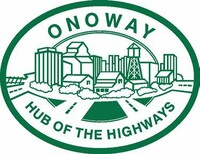We would like to acknowledge that we are on Treaty Six Territory, a traditional meeting grounds, gathering place, and travelling route to the Cree, Saulteaux (So-toe) Blackfoot, Metis, Dene (De-nay) and Nakota Sioux.
We acknowledge all the many First Nations, Metis, and Inuit whose footsteps have marked these lands for centuries.
The earliest native inhabitants of Alberta were camping and hunting in the province at least 11,000 years ago.
First Nations’ peoples had adapted to semi-nomadic life on the Alberta plains and woodlands. Bison hunting was a key part of the plains culture. More northerly tribes also hunted and fished for other types of game in the aspen parkland and boreal forest regions, and after European contact began trapping in order to exchange furs for trade purposes.
Both Woodland Cree and Nakota Sioux (Stoney) people were well established in the local area before European explorers first visited west central Alberta.
The Alexis Nakota Sioux Nation is located west of Onoway on the shores of Lac Ste. Anne, which the Nakota call Wakamne, or God's Lake. Every summer there is a pilgrimage to the lake that is attended by up to 40,000 people. Another nearby Nakota community is the Paul First Nation, located southwest of Onoway at Wabuman. Located north of Onoway at Sandy Lake is the Alexander First Nation, a Woodland Cree community.
Many fur traders in Western Canada married local (mainly Cree) women, and this gave rise to a new cultural group, the Métis. Iroquois hunters from eastern Canada also accompanied the fur traders, and they also married local Cree and Metis women. Descendants of the Iroquois and Metis people continue to live in the local area.
Plains Ojibwa (also known as Saulteaux or Soto) also moved into the area with the fur trade, but eventually ended up settling further west and north. Onoway’s name is most likely an adaptation of an Ojibwa word.
Sources:
- Government of Alberta:(accessed on July 21, 2009)
- Indian Tribes of Alberta by Hugh A Dempsey, Glenbow Museum, 1997;
- Alexis Nakota Heritage Program
